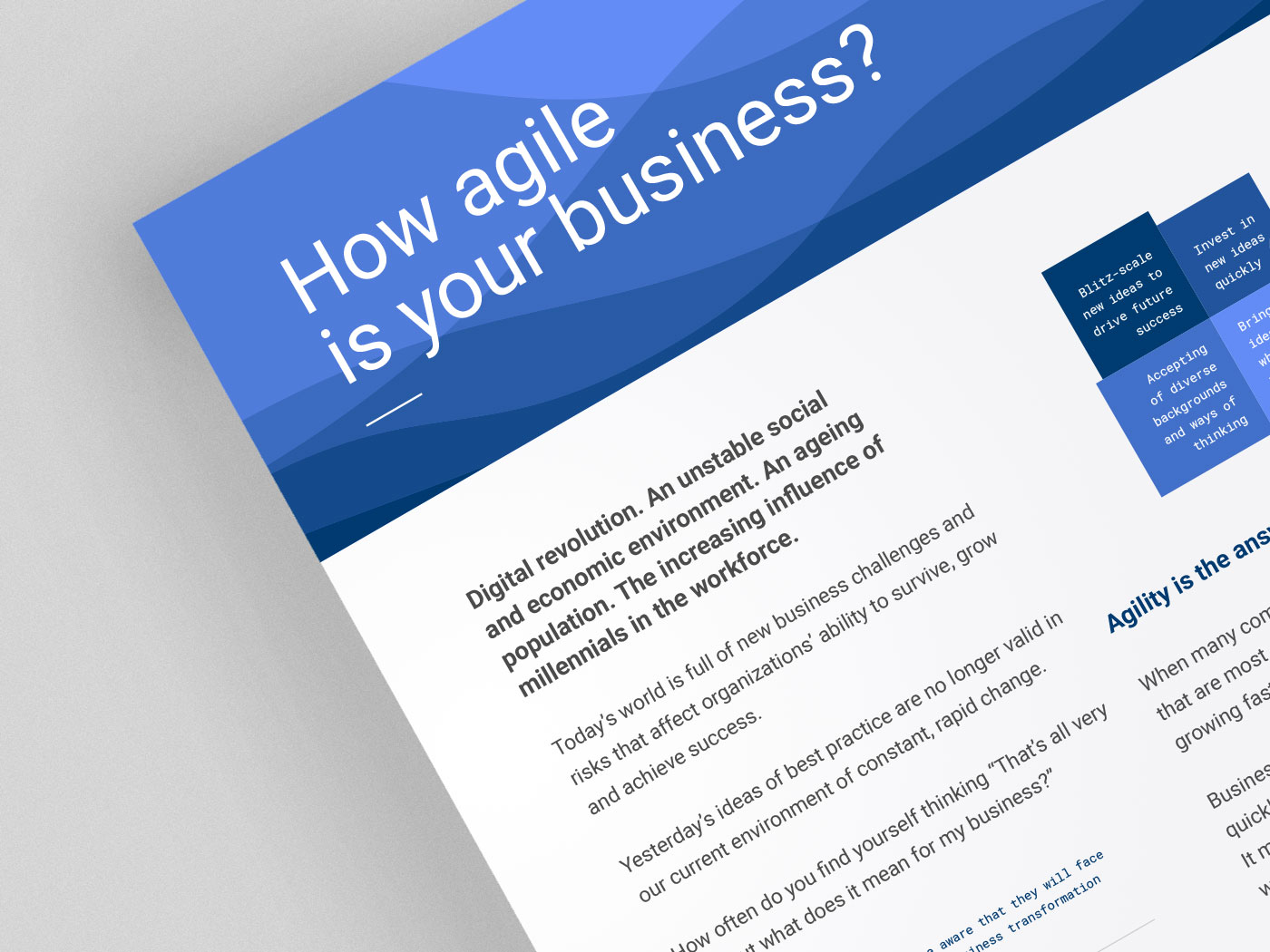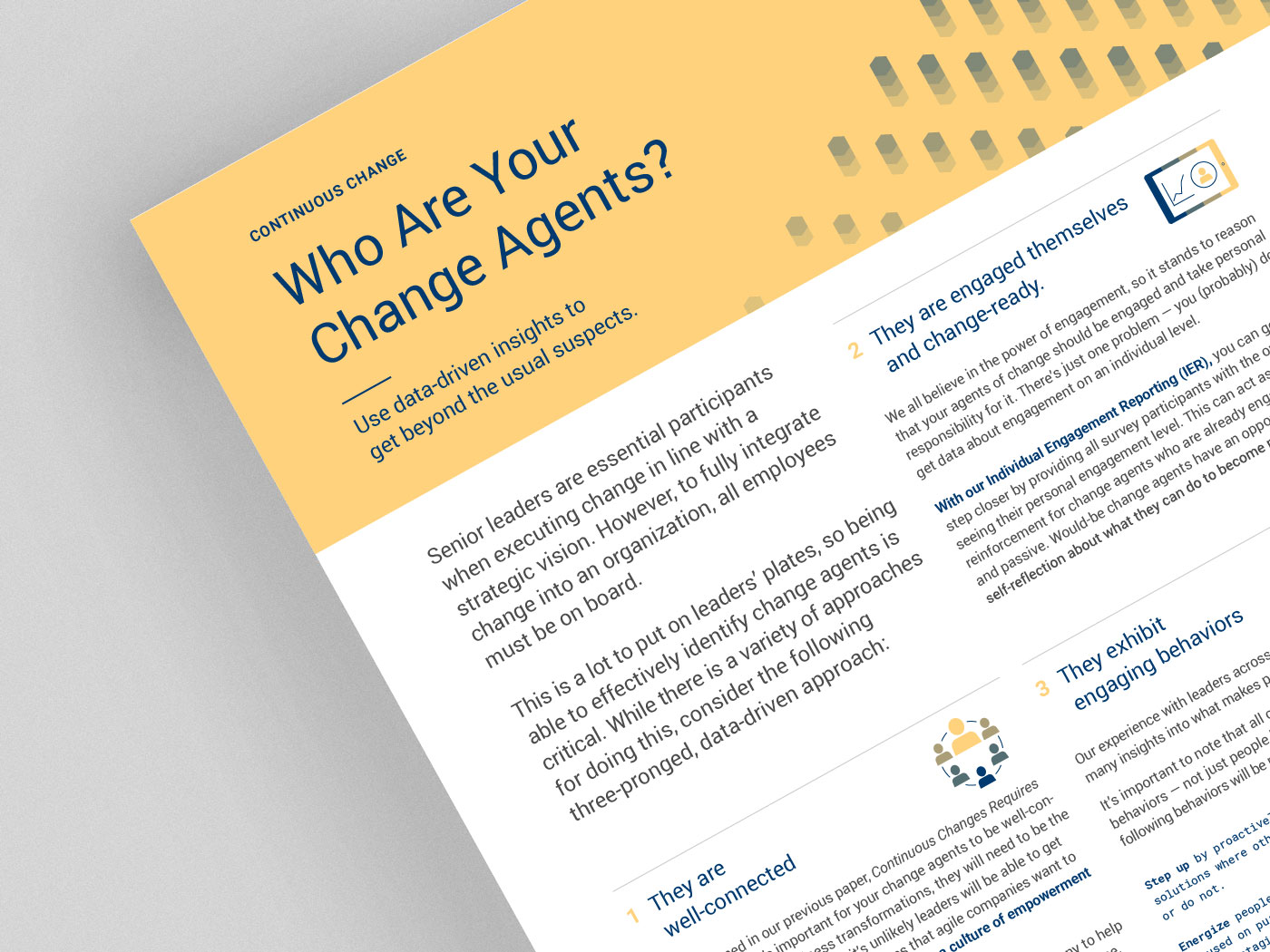
Senior leaders are essential participants when executing change in line with a strategic vision. However, to fully integrate change into an organization, all employees must be on board.
This is a lot to put on leaders’ plates, so being able to effectively identify change agents is critical. While there is a variety of approaches for doing this, consider the following three-pronged, data-driven approach:
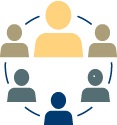
As mentioned in our previous paper, Continuous Changes Requires New Thinking, it’s important for your change agents to be well-connected. In major business transformations, they will need to be the organization’s leaders. But it’s unlikely leaders will be able to get involved in the continuous changes that agile companies want to drive. Instead, leaders need to develop a culture of empowerment for their most well-connected employees.
Use the power of organizational networks in your company to help identify individuals who are at the center of how work gets done. Given their centrality, these people will understand communication flows and potential barriers to success as well as anyone.

We all believe in the power of engagement, so it stands to reason that your agents of change should be engaged and take personal responsibility for it. There’s just one problem — you (probably) don’t get data about engagement on an individual level.
With our Individual Engagement Reporting (IER), you can get one step closer by providing all survey participants with the option of seeing their personal engagement level. This can act as positive reinforcement for change agents who are already engaged — and passive. Would-be change agents have an opportunity for self-reflection about what they can do to become more engaged.
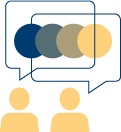
Our experience with leaders across a variety of industries has given us many insights into what makes people more engaging to their teams.
It’s important to note that all of your people can exhibit these behaviors — not just people leaders. Change agents who exhibit the following behaviors will be more effective in guiding continuous change.
German Translation | Lesen Sie auf Deutsch
Portuguese Translation | Leia em português
 Do you know who your change agents are? Contact us to talk about how we can help you identify the people who will make change stick.
Do you know who your change agents are? Contact us to talk about how we can help you identify the people who will make change stick.
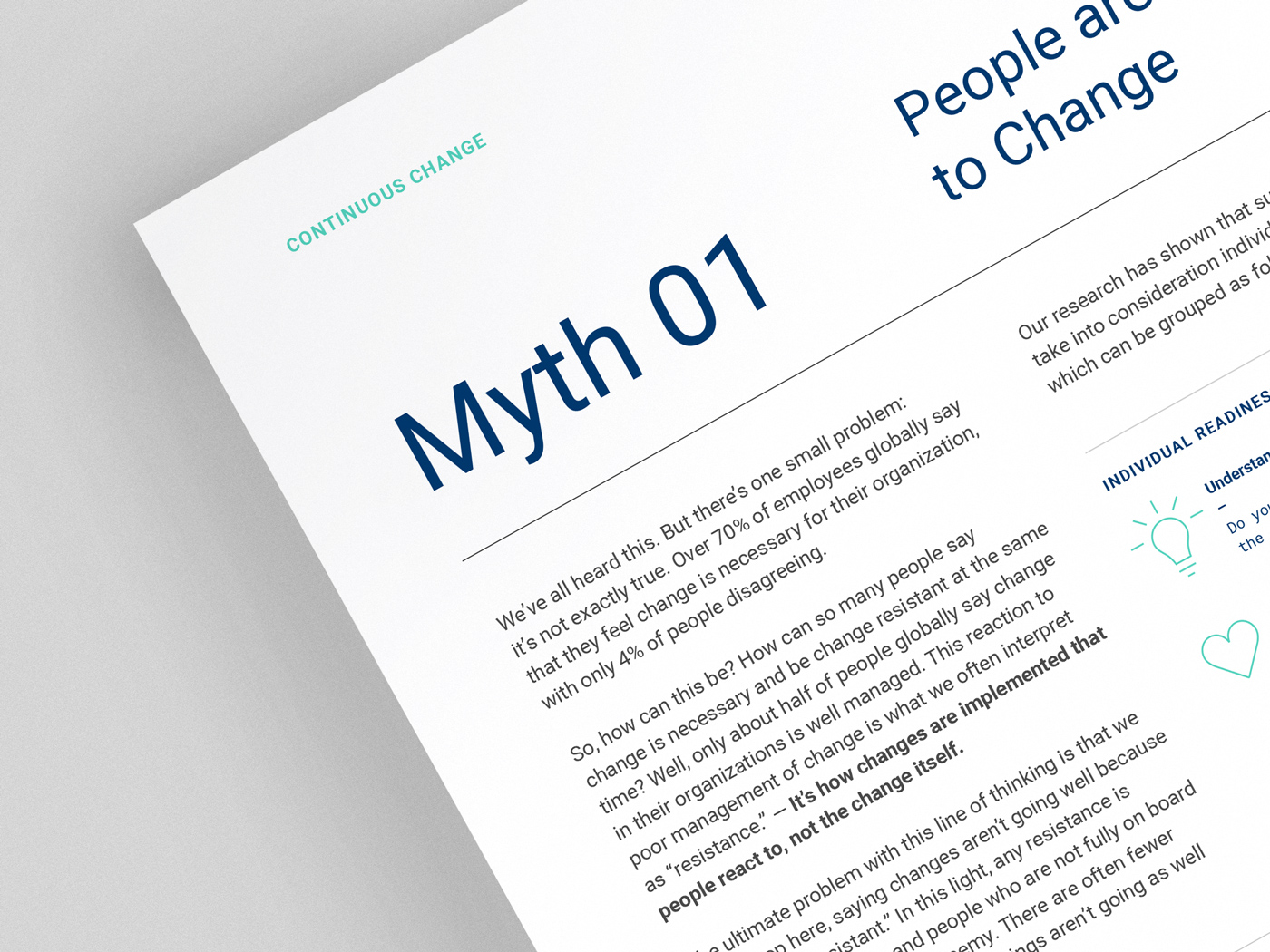
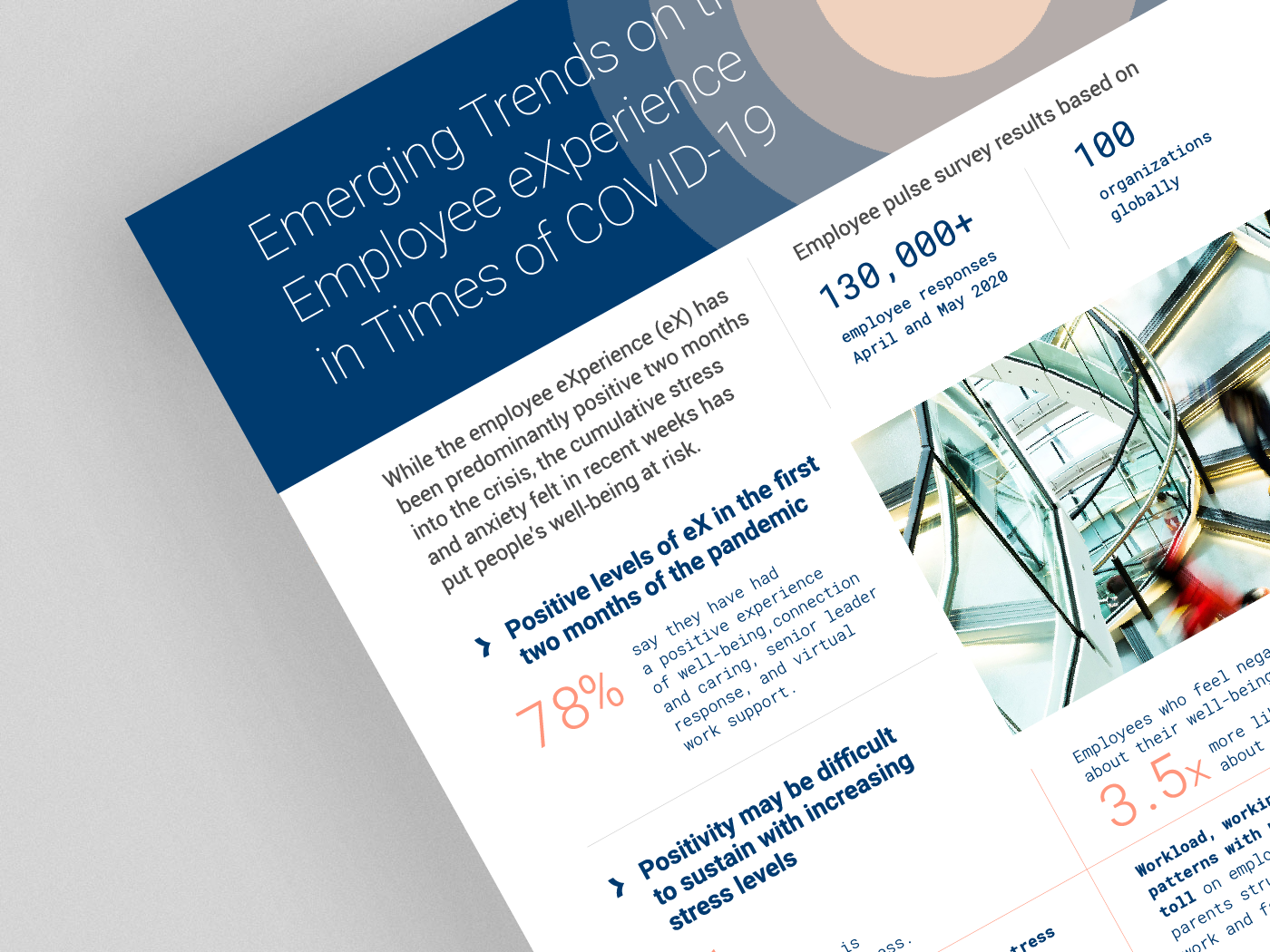
Our April/May employee pulse survey based on over 130,000 employee responses globally reveals that work-related stress is their #1 greatest concern. Discover our infographic with the latest employee eXperience trends.
